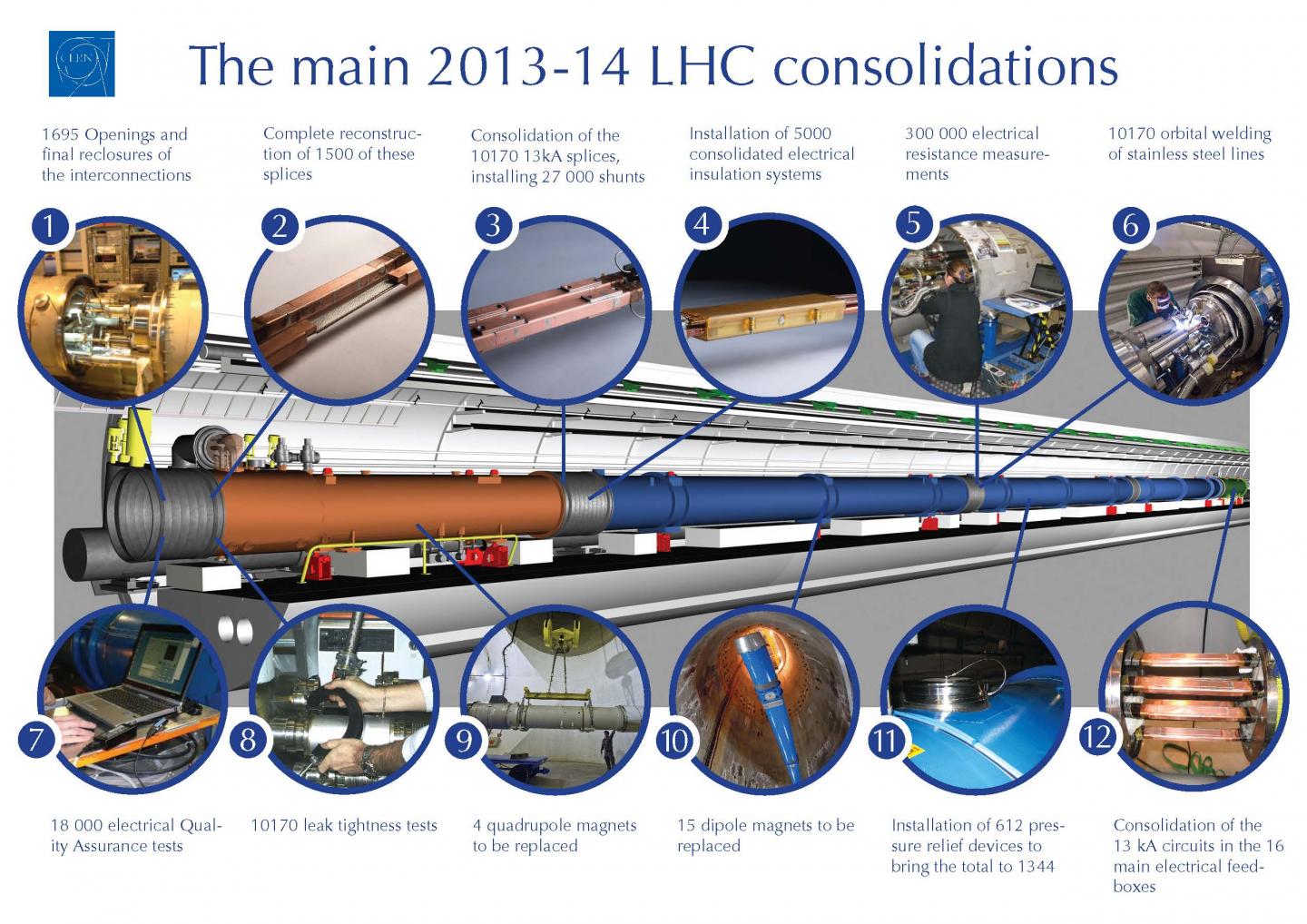For its first three years of running, the Large Hadron Colllider (LHC) has been operating below its design capacity of 14 TeV.
Though the 27-kilometre collider provided enough collisions for CERN experiments to find a Higgs boson in 2012, due to the mechanical damage and helium leak of 2008, it has not yet reached its full potential.
The LHC is in its first long shutdown and undergoing a process called "consolidation," which means that engineers and maintenance crews are repairing and strengthening the accelerator elements in preparation for running at higher energy in 2015.
Over the next few months, CERN will be producing a series of videos to explain each step of this process. The videos will detail the jobs that must be completed in order to boost the LHC into higher gear. See the diagram above for an overview.
These tasks include testing and replacing some of the LHC’s main dipole and quadrupole magnets, which are used to bend the paths of the particles and keep them tightly bunched; adding reinforcing “shunts,” to the current-carrying splices between the magnets; conducting tests to detect any irregularities in the magnets or imperfections in the electrical insulation; and a range of other work to improve the machine.
Watch the first LHC consolidations video: "Get connected: Consolidating LHC splices"

